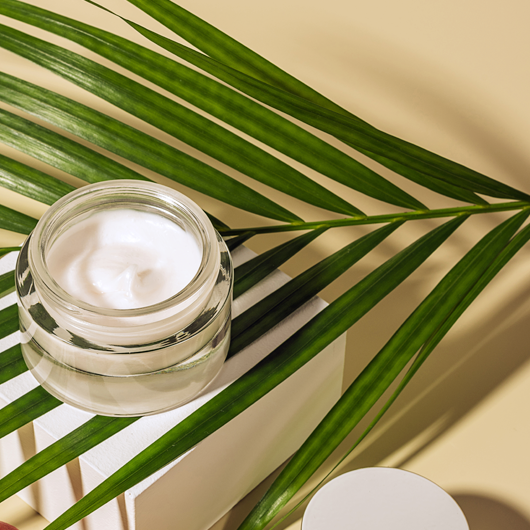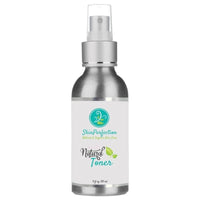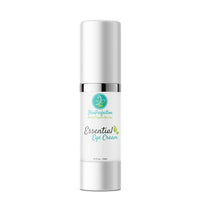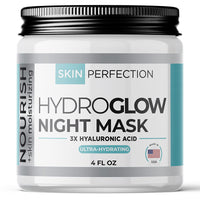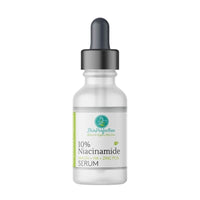Aloe Vera
The Benefits of Aloe Vera
EWG Rating Scientific Names: {Organic Aloe Barbadensis Juice}
Scientific Names: {Organic Aloe Barbadensis Juice}
Common Names: {Aloe, Aloe Vera, Aloe Extract}
Part of plant used: {outer leaf, inner leaf, juice}
Did you know that your skin needs 22 essential elements to function correctly? Aloe contains 18 of them.
Aloe Vera uses are endless. Since ancient times, the pain of burns sustained from the sun or fire has been soothed by this plant.

Aloe is naturally cooling and has therapeutic properties. Moreover, it is a common ingredient in balms and lotions. So, adding it to makeup can help calm easily irritated and sensitive skin and improve facial clarity.
Additionally, it is also commonly added to shaving cream to help eliminate the sting of razor burn. However, Aloe's superior ability is to provide long-lasting hydration.
You can find it in many forms, from gels and powder to juice. It is mainly cold-pressed, where the "jelly" is extracted from the leaves. Additionally, the gel freeze-dried can produce a powder.
In short, Aloe Vera is easy to use; take the leaves, cut them open, and apply the juice.
Further, the minerals, hydrates, and nutrients stored in the Aloe plant leaves make it one of the best natural moisturizers available. In addition, hydrating polysaccharides, including Acetyl Mannans, in gel form without preservatives is the optimal format your skin prefers.
Best Aloe Vera Uses
- Alleviating the itch or pain of bug bites
- Calms rashes and eczema
- Mixed with organic salts or sugars, a refreshing body scrub
- Soothe sunburns
- It takes the sting out of a grease burn
- Improves facial clarity
- Non-greasy hydrating lotions
- Reduces redness

Additional Uses
Some even consume aloe vera orally for its anti-inflammatory properties. In addition, this wonder plant can be applied directly to the face to relieve an upset stomach, increase circulation, and strengthen teeth.
5 Benefits of Incorporating Aloe Vera into Your Skincare Routine
-
Soothing Properties: Aloe vera is renowned for its calming and anti-inflammatory effects. Aloe-based skincare products offer immediate relief, reducing redness and discomfort if your skin is red, irritated, or sunburned.
-
Moisturization without Greasiness: Aloe vera gel has a naturally hydrating formula, making it an excellent moisturizer, especially for those with oily skin. It provides necessary hydration without leaving a greasy residue or clogging pores.
-
Skin Regeneration: Aloe vera supports the skin's natural ability to regenerate. Its natural enzymes and minerals can help reduce inflammation and foster the restoration of skin cells, making it beneficial for minor cuts, scrapes, and burns.
-
Rich in Antioxidants and Vitamins: Aloe vera is packed with vitamins A, C, and E, which are all antioxidants that help protect the skin from damaging free radicals. Additionally, Aloe contains enzymes, amino acids, and other beneficial compounds that nourish the skin.
-
Anti-Aging Properties: Thanks to its ability to boost collagen production and elastin, aloe vera can help reduce the appearance of fine lines and wrinkles. Its moisturizing and antioxidant-rich nature also ensures that the skin remains supple and youthful.
When choosing products containing aloe vera or applying aloe vera gel directly to the skin, it's essential to ensure that you're using genuine aloe extract or gel. Some products might advertise aloe'Aloe'sfits but have minimal actual aloe content. Always read ingredient labels and, when possible, select products that list aloe vera as a primary ingredient.
Additionally, Aloe Aloeturizes, leaving your skin bright and your hair shiny and beautiful. Check out more organic skincare ingredients today.
Aloe Home Remedies
People use Aloe Aloeome home remedies to treat different ailments, including:
- burns
- asthma
- eczema
- psoriasis
- constipation
- coughing
- diabetes
- headaches
- ulcers
- mouth sores
- cold sores
- bloating
- discomfort
- stress
Historical Significance
Years ago, people often kept aloe vera plants in their homes to use for these home remedies. When someone was burned or their skin irritated, the simple solution was to cut off a piece of the plant and use the natural aloe gel to soothe the injury.
You can easily purchase Aloe Vera liquids and gels in packaged bottles and tubes from the store. Unfortunately, retailed versions of Aloe Vera are often not the gel straight from the plant but are often mixed with other ingredients or chemicals. The earliest known reference to Aloe is from a Sumerian tablet from 2100 BC, although the natural medicinal properties of this plant date back more than 4,000 years.
Egyptians called the aloe plant "The Plant of Immortality," while the Native Americans called it the "Wand of Heaven." Both cultures consider this plant great for its regenerative powers and nutrition.
Similarly, Aloe plants have appeared in the writings of ancient Greeks, Romans, Egyptians, Indians, and Chinese. Many of these cultures used it in wound healing. Egyptian queens even used the plant to enhance their physical beauty.
Sources:
https://nccih.nih.gov/health/aloevera
https://www.science.gov/topicpages/b/babosa+aloe+vera
https://en.wikipedia.org/wiki/Aloe_vera


